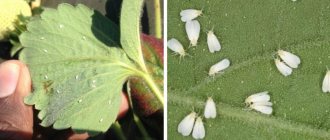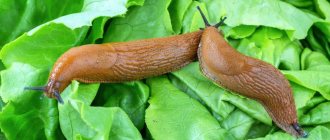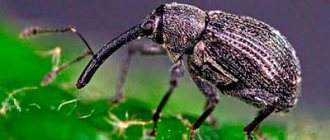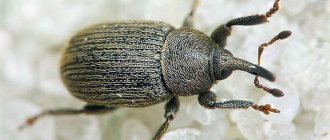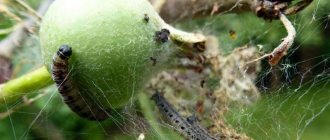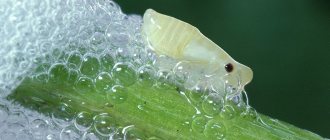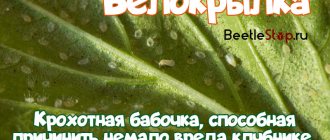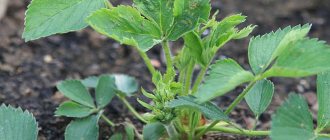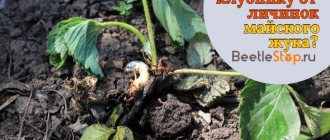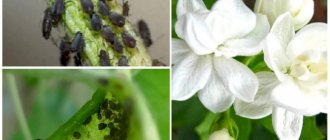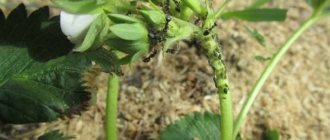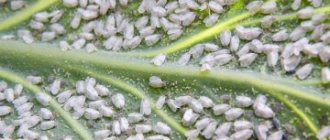Strawberries are a fragrant and juicy berry that not only children, but also many pests love to eat. Most often it is affected by caterpillars. For voracious worms, the berries and leaves of the plant are a real boon. They are soft, nutritious and very rich. If you leave the problem unattended, you can lose a considerable amount of harvest. There are a lot of methods for dealing with caterpillars on strawberries. For this purpose, both chemical reagents and folk remedies are used. But to find a suitable option, you will have to try several first.
A few words about the main pests
Before looking for methods to combat caterpillars on strawberries, you should try to determine what kind of pest attacked it. This will significantly reduce the search for the right product and increase the effectiveness of the fight.
- Swamp owl. This is a small hairy butterfly that lays its eggs on the underside of the leaf blade. The emerging caterpillars eat flowers, shoots, leaves, fruits, and ovaries. They can also take root near the root collar. The larvae make passages there, and the plant begins to quickly wither.
- Strawberry leaf roller. This is an ordinary nocturnal butterfly, but it is not itself that causes harm, but its caterpillars. They begin their harmful activities under the leaf at the base of the midrib. Having gotten a little stronger, they switch to the entire sheet. You can notice their appearance by the fact that the strawberry leaves will look like a sieve; they will all be riddled with small holes. Black caterpillars live and reproduce on strawberries throughout the summer.
- If caterpillars appear on leaves that have a rich green tint, then we are talking about an attack by sawfly larvae. This is a very insidious insect that can quickly destroy crops. A characteristic feature of this pest is that they begin to gnaw the leaf along the edge and only gradually reach the midrib.
- Slugs. These are very large caterpillars that require special climatic conditions to appear. They appear only in the absence of heat and high humidity. Slugs eat berries and eat leaves.
- Strawberry whitefly. A very miniature butterfly, no more than 1mm in length. They eat leaves, drink juice and attack ripe fruits. The larvae also eat leaves. As a result, the strawberry leaves dry out, curl, and fungus appears on them.
- Strawberry nematode. These are thin and transparent long worms that actively parasitize ripe fruits. They cause significant damage to the crop. The active phase of reproduction occurs precisely during the period of flowering and ripening of strawberries.
Caterpillars on strawberries
The fight against caterpillars on strawberries involves identifying the type of pest, selecting a product, treating the plants and regular prevention.
Major diseases
Like any berry crop, strawberries are often exposed to the influence of parasitic microorganisms, leading to the development of putrefactive processes and damage not only to the berries, but also to the plants themselves.
Gray rot
The most unpleasant fungal disease that can destroy most of the crop. Occurs in conditions of high humidity (frequent rains, excessive watering in the absence of mulch). It appears as fast-growing light brown or grayish spots with a moist fluffy surface on the fruit. In advanced cases, it spreads to the leaves and stalks, which can result in the death of the entire bush.
Powdery mildew
A fungal disease that develops from high humidity. It appears as a light powdery coating on any part of the bush, but more often on the leaves, as a result of which they curl and lose color. The development of the disease before or during flowering leads to disruption of pollination, and the resulting ovaries acquire a characteristic mushroom coating and smell.
Leaf spot (brown)
The disease often develops after harvest, and therefore many gardeners underestimate its danger. Meanwhile, dark spots with a light center on the leaf blades lead to drying out and death of the leaves at the moment when the plants form fruit buds for the future harvest.
White spot
It appears as brown or light dotted spots spreading towards the center, as a result of which the middle of the leaf blade falls out. If the bush is severely damaged, the disease spreads to the petioles and peduncles, which leads to the drying out of flowers and formed ovaries.
Verticillium wilt
At the very beginning, the disease manifests itself as small dark spots on the lower leaves, after which the lower tier completely dries out, and then the entire bush.
In dry sandy soil, plants can die within a week, in more fertile soil - within 1-1.5 months. Not only diseases, but also harmful insects can significantly ruin the strawberry harvest.
Strawberry or strawberry mite
The most common and dangerous insect for berry crops, damaging leaves and sucking juice from them. It overwinters in the soil at the base of the petioles and, with the arrival of warmer weather, begins to lay eggs on the still-blooming leaves. The leaf blades grow wrinkled and sticky, and the berries are small. During the season, the pest is capable of breeding 4-5 generations. If you don’t fight it, you can lose not only the crop, but the entire plantation.
Spider mite
Its presence is evidenced by a thin sticky web with which the pest envelops strawberry leaves. With severe infection, the leaves turn yellow and dry out, which leads to the death of the entire bush.
Raspberry-strawberry weevil
Another strawberry pest that spoils not only the green part of the bush, but also ripe fruits. A small (3-4 mm) gray-black beetle overwinters in the garden bed, and with the arrival of spring it crawls to the surface and feeds on young leaves. When the buds appear, the females begin to lay one egg in them. Soon a larva emerges from the egg and eats the strawberries, both ripe and still green, resulting in the entire crop being spoiled.
Strawberry nematode
This is a microscopic worm that lives at the roots and on the surface of plants. First, it damages the root part and stems, which is why the bushes begin to develop poorly, and the leaves, cuttings and even the ovaries are deformed.
Fireman Beetle
The beetle received its original name due to its characteristic red color with black stripes. It cannot even be called a pest, since it itself destroys pests: aphids, caterpillars, larvae of other beetles, thereby benefiting gardeners. But when there are a lot of these beetles in the garden, they begin to eat strawberry leaves and flowers, so their population needs to be controlled.
Red, juicy fruits can attract birds, which can not only peck at the fruits, but also damage the plants.
Chemical methods for protecting strawberries from caterpillars
Methods for controlling caterpillars on strawberries using special preparations should be based on the following principles:
- Strict adherence to instructions for use.
- Safety for humans.
- Degree of plant damage.
The following medications will help get rid of caterpillars on strawberries:
- Aktara. Intestinal insecticide. Available in powder form. The average cost is 250 rubles per 10 g. It is resistant to temperature fluctuations and dissolves well in water. After treatment, it retains its properties for a long time and is not washed off by precipitation.
- Marshal. Can be purchased in the form of an emulsion. Getting rid of caterpillars occurs due to the presence of acaricidal properties. You can spray the plants and apply insecticide to the soil. It specializes in the control of the Colorado potato beetle, but is often used against pests and many other crops. 65 rubles for 5 g.
- Zolon. Broad-spectrum insecticide. Belongs to the group of intestinal and contact action. Used during the strawberry growing season. The dosage depends on the type of plant. Retains its properties even when the ambient temperature drops to 10 degrees. Price 20 rubles per 10 ml.
- Nurell. The active ingredients are cypermethrin and chlorpyrifos. Available in the form of a concentrated emulsion. It has an almost immediate effect. Effective at temperatures up to +8 degrees Celsius. 1 liter costs 2000 rubles.
- Omite. The acclimation product provides relief from pests of fruit, berry and vegetable crops. Available in the form of a concentrated emulsion, which should be diluted in the required amount of water. Not active against eggs. Cost from 20 rubles.
- Karbofos. Helps fight leaf rollers on strawberries and many other caterpillars. Inexpensive, effective. Available in powder form. Requires dilution in water. To get rid of pests, strawberry leaves should be treated from the inside. 40 rubles per package.
Also, when choosing a product to treat against caterpillars on wild strawberries, you can use Karate, Actellik, Iskra, Zemlin, Pochin.
Pesticides to control caterpillars
Review
When small holes appeared on the strawberries, for a long time we did not know which insecticide was best to use. After all, the pests themselves were not visible and it was necessary to choose a universal but safe remedy. Therefore, we decided to use the biological drug Bitoxibacillin. The next day after treatment, no changes were noticed. But already at the 5th mark the leaves began to fall off and the plants came to life.
Margarita, Moscow
Review
I grow strawberries for sale. When the green caterpillars appeared, I was very afraid for my harvest. I decided not to try my luck with folk remedies and immediately bought Nurell. Expensive, but very effective. If treated in a timely manner, it will not cause any harm to humans.
Ilya, Novorossiysk
Prevention
The best way to fight any disease is to prevent it, so try to pay more attention to preventive measures:
clean the bed of plant debris twice a year: in the fall, after harvesting and in early spring - this will help avoid, or at least reduce the likelihood of infection of the bushes with fungal diseases; in the spring, spray young leaves with a 1-2% solution of Bordeaux mixture, or with the following preparations: Ridomil, Metaxil, Falcon, Zolon, Previkur;
dig up the rows several times a season and remove weeds along with the roots, because most microbes and insects live in weeds; observe crop rotation - specific diseases of strawberries and strawberries develop more often in old beds, so change the location of the strawberry plantation every four years, and remember that you can return strawberries or wild strawberries to their original place no earlier than after 6 years; when growing strawberries in greenhouses, it is necessary to strictly monitor the level of temperature and humidity, since any sudden changes can provoke the development of diseases; when planting a new bed, pay attention to disinfecting the soil - it should be well watered with a solution of potassium permanganate or boiling water; to treat the roots before planting seedlings, use stimulating biological solutions, they not only accelerate the survival of plants, but also kill harmful microorganisms - for berry crops, ash solution and aloe juice are considered the most useful and natural; purchase seedlings only from trusted nurseries or grow them yourself; do not plant a berry plantation next to raspberries, since strawberry diseases and pests are very similar.
But also don’t forget about plants and insects that can benefit strawberries. For example, plants such as lupine, garlic, and onions are natural insecticides, and many pests avoid them. Attract fireman beetles and ground beetles to the garden bed; they are real garden nurses, since their main food is harmful insects and their larvae.
Folk remedies
Using folk methods to combat strawberry and strawberry caterpillars is not only safe, but also effective. Such methods will always come to the rescue when the pest attack has reached its peak, and there is no opportunity to use a chemical. Also, after using folk remedies, you don’t have to worry that chemicals will enter the human body. Another advantage of these methods is their versatility. The same products can be used to treat cabbage, strawberries, currants and raspberries.
Traditional methods of fighting caterpillars
How to deal with green caterpillars on strawberries, as well as other pests without using chemicals:
- Infusion of wormwood. A very good remedy that helps solve not only the problem with strawberry bushes, but also many other crops. To do this, fill the bucket halfway with wormwood grass and fill the rest with water. Leave in a warm place for at least a day. Spray the affected plants with the resulting liquid.
- Field chamomile. Collect and dry flowers. Grind and prepare raw materials. Take 100 g of dried chamomile for 1 liter of water. Place in a dark place for 24 hours. After this, you can process the beds with strawberries.
- Ash. Its caterpillars are afraid and will not even come close. Scatter under the bushes and leave.
- Soap-ash solution. This combination will not only help get rid of pests on the leaves, but also strengthen the plants. Add 200 g of ash and a piece of laundry soap to a bucket of water. Stir until completely dissolved and spray the crops.
- Needles. It itself will become an obstacle for the caterpillars. They won't be able to get across to it. Place the needles on the soil near the strawberry roots. This method is not suitable for those pests that appear directly on the leaves.
- Tobacco dust. A safe method that can also be used during the strawberry flowering period.
- Tansy infusion. This specific plant helps fight many garden and garden pests. You can buy dried flowers at the pharmacy. Pour 100 g of herb into 1 liter of water and boil for 20 minutes. After this, cool and strain. Pour the prepared solution into a bucket of water and treat the area.
As a preventive measure, you should adhere to the following rules:
- Plant only healthy seedlings.
- Maintain crop rotation.
- Strawberries should not be planted next to plants that are affected by the same pests.
Thus, caterpillars on strawberries are a rare phenomenon, but can cause a lot of trouble. And if the leaves of the crop began to wither, holes appeared on them and any bugs or caterpillars were found, measures should be taken immediately to combat them.
How to fight?
Chemical means
In the fight against slugs, the drugs Slugeater, Meta, Ulicide, Metaldehyde and the Swiss drug Thunderstorm (waiting period 20 days) have proven themselves well.
The method of their application is as follows: the product is scattered in furrows and between rows, on garden paths and around damaged plants at the rate of 15 g per 5 m2. “Thunderstorm” can also be used as a bait for pests: the drug is spread in 0.5 teaspoonfuls onto pieces of roofing material and left on the beds overnight; in the morning, the baits are inspected and pests are removed from them. The listed drugs belong to hazard class 3, that is, they are low toxic to humans and animals. However, when using them, you must strictly follow the included instructions. It is also not recommended to use chemicals during the ripening of berries and immediately before harvesting in order to avoid the accumulation of harmful substances in the fruits.
Folk remedies
To protect the ripening strawberry crop from pests without the use of chemicals, you can use the following folk recipes:
- sprinkling the beds with dry mustard powder, wood ash or slaked lime - mustard and ash do not pose a danger to plants, they can be sprinkled under the bushes “by eye”, when adding slaked lime you need to adhere to the norm of no more than 20 g of product per 1 m2 of bed;
- mulching beds with pine needles;
- spraying plants with a solution of ammonia - the alcohol is mixed with water in a ratio of 1:6, the stems and leaves of strawberries are thoroughly treated with the resulting solution (table vinegar can be used in a similar way to repel shellfish);
- treatment of plantings with infusion of hot pepper – 1 kg. crush the pepper and pour in 10 liters. water, the liquid is infused for 2 days, after which it is boiled for about an hour over low heat. After cooling the finished infusion, generously spray the strawberry bushes with it (the fresh vegetable can be replaced with hot pepper powder - it will take about 50 g);
- covering the ridges with black plastic film - in the dark, slugs crawl under the film because it is humid and warm under it, and during the day, when the sun heats the dark material, the mollusks die under it from overheating, not finding a way out to the surface;
- creating “barriers” from eggshells or nut shells - through such prickly barriers slugs cannot physically get close to the strawberry bushes;
- treatment with mustard or garlic infusion. To prepare mustard infusion, dilute 50-100 g of dry mustard powder in 10 liters of cold water and let it brew for at least 2-3 hours. Garlic infusion is also not difficult to prepare. Squeeze 2 heads of garlic through a garlic press and boil for 3 minutes in 1 liter. water. Then dilute 2-3 tablespoons of concentrated extract into 10 liters. water and spray strawberry beds in the evening in dry weather;
- Plant garlic, parsley, oregano, thyme, balsam, and lavender along the perimeter of the bed. Slugs avoid plants containing essential oils, alkaloids, flavonoids, so they will bypass the protective barrier, and with it the strawberries;
- Use disposable shallow beer dishes or beer traps. Make several round holes in a plastic bottle, 3-5 cm in diameter. Pour some beer into the bottom of the bottle and bury the container so that the holes are at ground level. Shade the top of the bottle with a piece of fabric.
If it is not possible to use traditional methods, you can simply collect slugs by hand. This is a rather labor-intensive, but quite effective activity. To find mollusks in the area, you need to water the soil in several places with water in the evening and place pieces of slate, cardboard, iron or plastic on it. By morning, almost all the slugs from the immediate area will gather under these shelters. They will need to be collected and destroyed or simply taken away from the site.
Chemicals to combat whitefly
Chemicals are used when there are too many pests or more gentle means have been tried and have not given the desired result. The whitefly on strawberries quickly gets used to and adapts to the pesticide used, so experts advise treating the plants several times in a row, alternating insecticides of different groups.
Here is a list of the most effective drugs used to kill whiteflies.
“Iskra”, “Decis”, “Caesar”, “Cypermethrin”. The main group of insecticides against winged pests are pyrethroids, which are characterized by contact-intestinal action. Entering the body through the oral cavity and the smallest pores, the toxic substance settles in the stomach and blocks nerve impulses, which leads to the death of the insect. Pyrethroids are effective and fast acting. They are non-toxic to humans and other warm-blooded organisms. The main disadvantage is the rapid adaptation of pests to the insecticide.
"Aktellik", "Fufanon". Organophosphorus preparations are toxic to bees and fish
They must be used with extreme caution.
"Aktara", "Mospilan", "Confidor". Systemic neurotoxic insecticides are effective against a number of pests and can be used for root treatment and spraying.
"Fitoverm", "Vertimek"
The drugs belong to the group of insectoacaricides and combine a wide spectrum of action with low tolerance to insects. They fight pests regardless of their location (on the front and back sides of the sheet).
"Rovikurt". The drug is available in the form of an oily liquid and is used when whiteflies appear in significant quantities.
To strengthen the plant's immunity and increase resistance to stress, treatment with insecticides against whiteflies can be combined with the use of growth stimulants. The drug “Bud” is perfect for these purposes.
When treating strawberry beds with chemicals, the following rules should be observed:
- strictly adhere to the dosage indicated by the manufacturer on the packaging;
- spray plants only in dry, windless weather;
- change medications to prevent the pest from becoming accustomed to the chemical;
- It is better to carry out the treatment early in the morning or in the evening, after sunset, since sunlight hitting the leaves with drops of a toxic substance will cause a serious burn;
- Frequent and excessive use of pesticides leads to their accumulation in the soil, which makes eating berries collected from this area unsafe.
To get rid of adult whitefly and larvae, it will be enough to carry out four treatments with a break of 5 days. Moreover, each time the concentration of the chemical substance should be reduced. This is the only way to completely get rid of the parasite and obtain fruits that are harmless to human health.
What caterpillars can be found in the garden?
There are many types of caterpillars. But in our latitudes in Russia, several main species are most often found. Let's take a closer look at these garden pests.
A small caterpillar with a large number of dense hairs on its body. There are three black and two brown-orange stripes along it.
A small caterpillar covered with tufts of coarse red hair. There are narrow red and white stripes along the body. There are red spots on each segment of the tip of the body.
Very small greenish-brown caterpillars that live in colonies on plant leaves. They do not disdain both buds and buds. The leaves are curled up like a cobweb - the first sign.
The caterpillars are long, can be gray or brownish, the stripes on the body are dark brown. The segments have purple or red warts.
The first symptoms of pests appearing on trees are rolled leaves and covered with cobwebs. on shrubs and vegetables they are easy to detect visually. They need to be torn off or collected and destroyed.
Signs of plant damage and damage
Signs of damage are not specific. Kivsyaki gnaw holes of varying depths in the berries. But often inside the hole you can find a larva of a noose or even several larvae intertwined in a ball. Damaged berries acquire an unpleasant odor and cannot be used for food. In a cold and wet spring, nodule moths can damage the root system and underground part of the stems of many crops, gnawing out small cavities in them. The affected areas turn brown or black. Plant development slows down, and if severely damaged, they dry out and die. In cases where woodlice and woodlice are present in the soil together with woodlice, the damage to cultivated plants is most serious.
Kivsyak in strawberries
Spraying with insecticidal preparations
You can treat strawberry bushes with such preparations as Kemifos, Fufanon, Karbofos. You can find them at a garden store. The products are safe for the bush itself, but at the same time they effectively fight harmful insects, are environmentally friendly, and do not accumulate on the bush or in the ground. The treatment must be carried out twice. Last time no later than five days from the beginning of strawberry flowering. It is better to spray plants in the morning in dry, windless weather.
You can also use Inta-vir (1 tablet per 10 liters of water). Grind the tablet directly in the bag, pour it into a bucket and stir well. To spray, take a spray bottle.
Strawberry mite (Tarsonemus fragariae)
These small insects cause a lot of trouble in spring and summer. And if ixodid ticks are carriers of dangerous diseases, then garden pests completely destroy plantings. In the process of development, the elusive mites acquired microscopic sizes (no more than 0.2 mm) and an inconspicuous color, which varies from translucent to yellow-brown.
It is very difficult to detect pests at the initial stage. Typically, the impact of mites can be noticed only in the second half of summer, when the leaves curl, acquire a yellowish waxy coating, wrinkle and die. The bushes become dwarf and lifeless, as mites literally suck all the juices out of the plant. Although ticks live everywhere and in regions with any climate, humid and warm zones in the north are more attractive to them than the arid and hot south. Average yield losses depending on the variety are 20-50%.
Measures to combat strawberry mites:
|
Description of weevils
In another article, we covered the question of what a nematode is and how to fight it on strawberries. Another pest of strawberries is the weevil. The body itself is small - about three millimeters. It has a dark gray color.
The beetle parasitizes mainly on berries and causes enormous damage to the crop (up to forty percent). However, he is not interested in ripe fruits. The buds themselves are much more attractive to him; eggs are laid on them. Then the hatched larvae eat the flower and the bud dies.
Strange, but the weevil does not like ripe berries. But they may not even grow, because the beetle will damage the berry buds in advance. The larvae pose a danger not only to plants and crops, but even to trees. Beetles love to use coniferous plantings as food and home.
There are several types of weevils:
- Elephants. They are distinguished by an elongated trunk. This is the most common type of parasite in Russia. Thanks to the water-repellent felt that covers the paws, they do not sink in water, and their body does not even get wet.
- Large pine weevil. It is the worst enemy of the forest. Its body is brown, with orange stripes on it. Its length is almost one and a half centimeters. Loves to eat young trees. In areas with old trees it is almost impossible to find.
- Pine weevil (brown color and yellow dots). The larvae can be found on the stump under the bark; they are not dangerous. The same cannot be said about adult parasites that damage coniferous trees and gnaw the bark. This can lead to the death of a fragile plant. The pine weevil is brown in color with yellow dots that form two longitudinal stripes.
- Blue pine weevil (black and blue coloration). Makes holes in young trees to lay eggs there. Then larvae will appear from them.
- Giraffe. Its neck is often longer than its body, hence the name.
